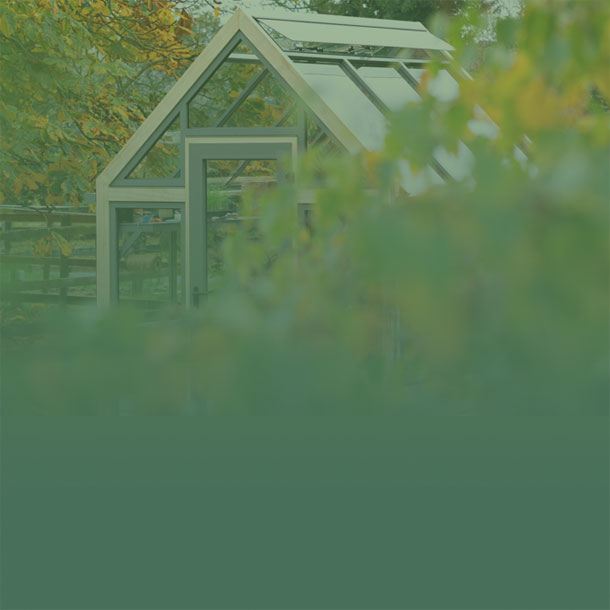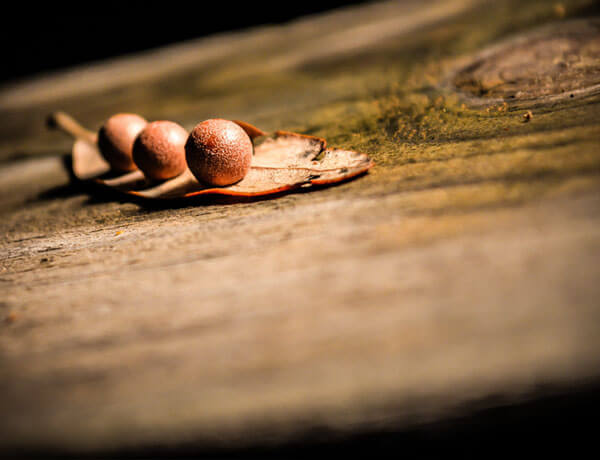-
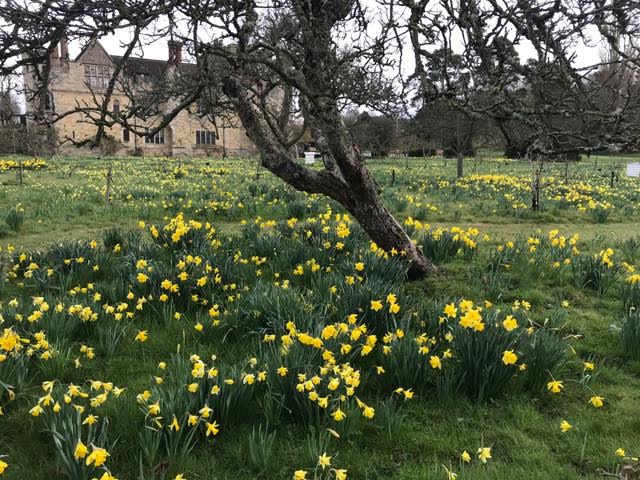
Hever Castle & Its Dazzling Daffodils
30th March 2018 • Places to Visit • Stephanie Donaldson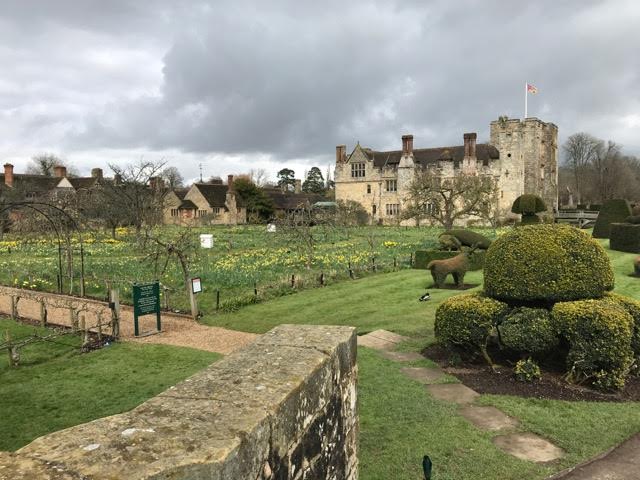 I’m quite good at visiting far-flung castles, but for some reason those much closer to home are often overlooked by me in favour of more intimate gardens. However, an invitation to go to Hever Castle to see their daffodils in the company of the head gardener Neil Miller and Mr Daffodil himself, Johnny Walkers, finally lured me there – and a very rewarding experience it was too.
I’m quite good at visiting far-flung castles, but for some reason those much closer to home are often overlooked by me in favour of more intimate gardens. However, an invitation to go to Hever Castle to see their daffodils in the company of the head gardener Neil Miller and Mr Daffodil himself, Johnny Walkers, finally lured me there – and a very rewarding experience it was too.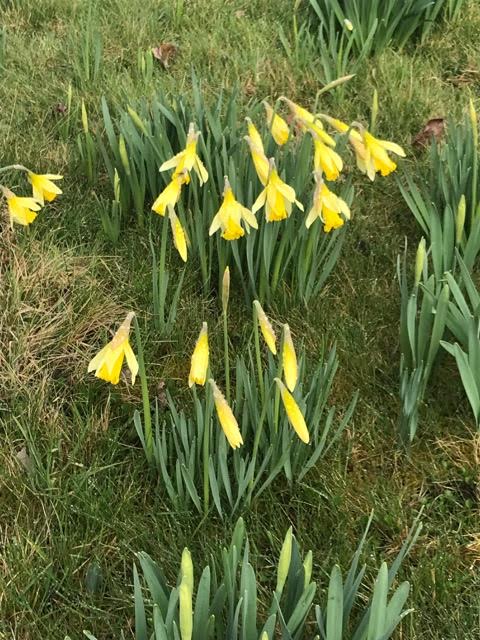

The castle – quite a modest affair as castles go – was the home of Anne Boleyn, second wife of Henry VIII, so it was tempting to picture the couple wandering through the carpet of daffodils beneath gnarled apple trees in Anne Boleyn’s Orchard. The truth is that in Tudor times the castle was set in boggy marshland – the orchard and the surrounding gardens are 20th century additions.
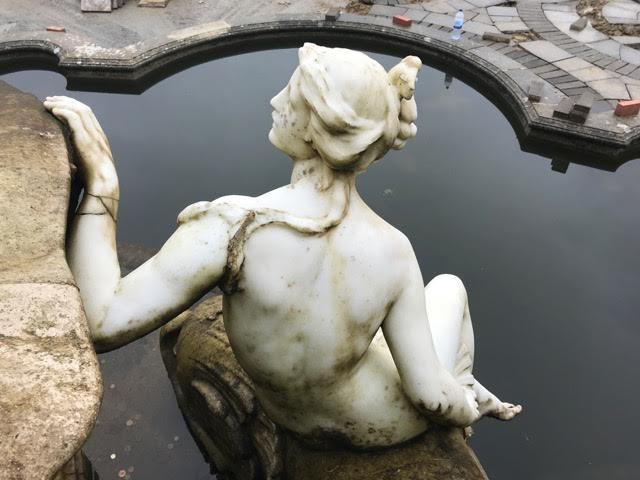

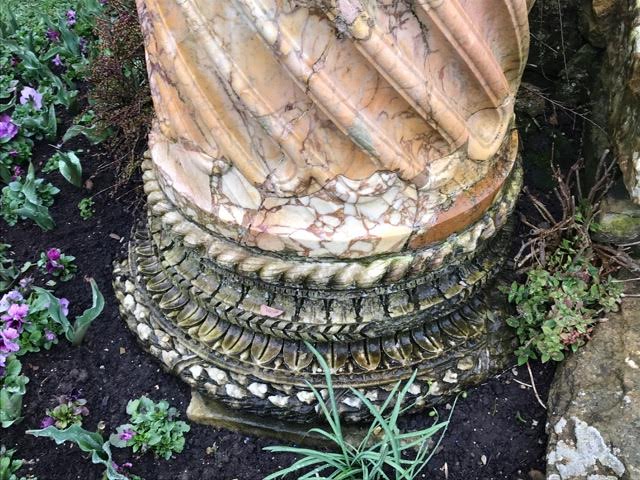

When American William Waldorf Astor acquired the castle in 1903 he devoted himself to its restoration and to creating a garden that reflected his love of the Tudors and would also be a suitable setting for the classical statuary he had collected when he was Ambassador to Rome. In today’s money, he spent £1billion on the works. The garden we see today retains much of his design, although adapted to be cared for by a team of twelve gardeners, as opposed to the eighty to one hundred who kept it in immaculate order in Astor’s time!
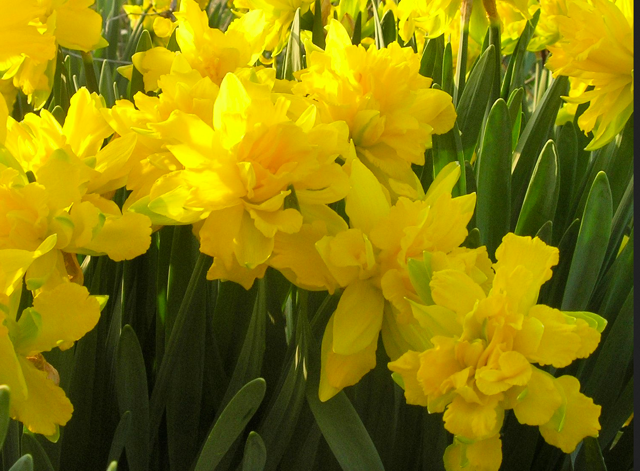
Narcissus telamonius plenus

Narcissus ‘’Double White’
Hever is currently holding its first Dazzling Daffodils event so this, rather than the wider garden, was the main focus of my visit. It transpires that daffodils – and not just the native Narcissus pseudonarcissus – have been around for a very long time. Johnny gave an example of N.telamonius plenus which is reported as early as 1620. Many of these old cultivars were lost during the Second World War when the daffodil growers were forced to plough up their fields to grow food, although some had the foresight to throw the discarded bulbs up onto banks and into hedgerows, from where Johnny and other enthusiasts have been rescuing them ever since. Sometimes Johnny is asked to identify mystery daffodils that have turned up unexpectedly in gardens. This often happens, he says, after building works. Bulbs that have been previously buried too deep and have lain dormant, find themselves closer to the surface of the soil and will start into growth once more – a floral resurrection. This may be the source of the lovely Narcissus ‘Double White’ that arrived unexpectedly in my own garden.
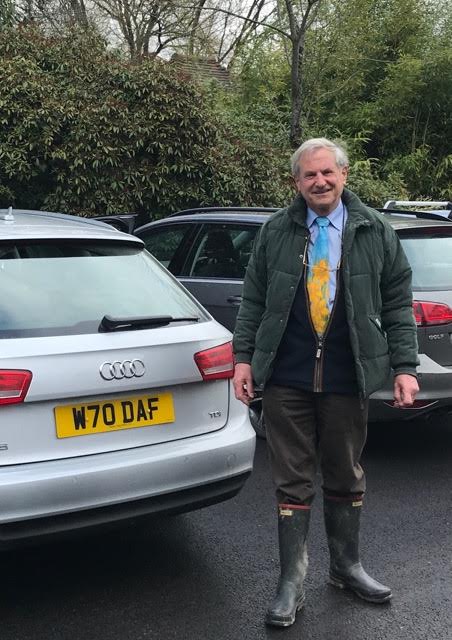
‘Mr Daffodil’ wearing his daffodil tie next to his appropriate number plate
Head gardener Neil and his team planted seven thousand new daffodils in Hever’s orchard last year. To avoid digging up the existing bulbs he photographed the orchard in spring, so that when autumn came they were able to fill the gaps. A top tip that I shall follow. There was some useful information from Johnny on blind daffodils (leaves but no flowers) too. Apparently it’s a natural part of the life of a daffodil – leave them a few years and, vigour restored, they will flower once more, while others will take a back seat. Unless you are in the habit of cutting back the leaves, or tying them in knots, in which case it’s your own fault! The other thing I learnt from him is that white daffodils always flower later than the yellows – something I don’t think I had realised previously.
Find out more about Hever Castle at www.hevercastle.co.uk
Johnny Walkers is going for his 25th Gold Medal at this year’s Chelsea Flower Show www.bulbs.co.uk

